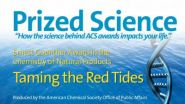(Press-News.org) In a proof of principal study in mice, scientists at Johns Hopkins and the Virginia Commonwealth University (VCU) have shown that a set of genetic instructions encased in a nanoparticle can be used as an "ignition switch" to rev up gene activity that aids cancer detection and treatment.
The switch, called a promoter, is a set of chemical letters that interacts with DNA to turn on gene activity. In this case, the scientists used a promoter called PEG-Prom, cloned by VCU researcher Paul Fisher, Ph.D. PEG-Prom is activated only when inside cancer cells, not in normal ones.
"With current imaging devices like CT and PET, we can tell if something is wrong in a patient, but we don't have definitive tools to distinguish cancer from inflammation or infection," says Martin Pomper, M.D., Ph.D., professor of radiology at Johns Hopkins. "It generally takes at least one month after giving patients certain cancer treatments before existing imaging tools can measure the patient's response to the therapy."
To differentiate cancer cells from normal cells, Johns Hopkins scientists connected PEG-Prom to either a gene that produces firefly luciferase, the substance that make fireflies glow, or a gene called HSV1tk, which initiates a chemical reaction with radioactive labels inside the cell that can be detected by imaging devices. Once inside a cancer cell, the PEG-Prom switch is turned on, and it activates either the luciferase or HSV1tk gene.
Then, they stuffed the PEG-Prom/gene combination into tiny spheres – about 50,000 times smaller than the head of a pin – and intravenously injected the nanoparticles into mice with either metastatic breast cancer or melanoma.
The findings, reported in the December 12 online edition of Nature Medicine, reveal a 30-fold difference in identifying cancer cells containing luciferase and normal cells that did not contain the substance. Similar results were observed in cancer cells filled with the radioactive labels and normal ones that were not.
"This type of imaging technique has the potential to add to existing tools with more specificity in identifying the problem," says Pomper.
Pomper says that the technique could likely be used in any cancer, and the nanoparticle and HSV1tk gene used in the current study have been tested previously in clinical studies unrelated to Pomper's work.
In addition to diagnostic and monitoring tools, the technique could be designed to deliver therapies to the heart of cancer cells. One approach, he says is to use radioactive isotopes to make cancer cells radioactive from the inside, instead of delivering radiation to the patient externally.
Still, Pomper says, such a technique would be limited to identifying tumors that are two millimeters or larger, amounting to millions of cells, because current imaging devices cannot detect anything smaller. He also says that certain doses of nanoparticles could be toxic, so his team is conducting tests to find the best nanoparticle.
INFORMATION:
Funding for the research was provided by the National Institutes of Health, the Society of Nuclear Medicine, the Korea Science and Engineering Foundation Fellowship Program, and the U.S. National Foundation for Cancer Research. Fisher is the Thelma Newmeyer Corman Endowed Chair in Cancer Research at the VCU Massey Cancer Center, professor and chair of the Department of Human and Molecular Genetics, and director of the VCU Institute of Molecular Medicine in the VCU School of Medicine.
Additional scientists involved in the research were Hyo-eun C. Bhang, Kathleen L. Gabrielson and John Laterra from Johns Hopkins.
On the Web:
www.hopkinskimmelcancercenter.org
Dr. Martin Pomper: http://www.hopkinsmedicine.org/pharmacology/research/pomper.html
VCU Massey Cancer Center: http://www.massey.vcu.edu/
Nanoscale gene 'ignition switch' may help spot and treat cancer
2010-12-16
ELSE PRESS RELEASES FROM THIS DATE:
UGA researchers develop rapid diagnostic test for common type of pneumonia
2010-12-16
Athens, Ga. – University of Georgia researchers have developed a technique that can diagnose a common type of pneumonia within minutes, potentially replacing existing tests that can take several days for results.
The researchers, whose findings are detailed online in the journal PLoS ONE, detected Mycoplasma pneumoniae, which causes atypical or "walking pneumonia," in true clinical samples with over 97 percent accuracy using a recently-developed nanotechnology-based platform.
"If you can make a positive identification from a 10-minute test, then appropriate antibiotics ...
A positive mood allows your brain to think more creatively
2010-12-16
People who watch funny videos on the internet at work aren't necessarily wasting time. They may be taking advantage of the latest psychological science—putting themselves in a good mood so they can think more creatively.
"Generally, positive mood has been found to enhance creative problem solving and flexible yet careful thinking," says Ruby Nadler, a graduate student at the University of Western Ontario. She and colleagues Rahel Rabi and John Paul Minda carried out a new study published in Psychological Science, a journal of the Association for Psychological Science. ...
Protein disables p53, drives breast cells toward cancer transition
2010-12-16
HOUSTON - The recently identified TRIM24 protein plays an active role in pushing normal breast cells into rapid cell proliferation and, potentially, into breast cancer.
Reporting in the journal Nature, a team led by researchers at The University of Texas MD Anderson Cancer Center found that TRIM24 (tripartite motif-containing 24) pushes estrogen-responsive genes toward active expression. This expression, in turn, sets the stage for malignant transformation of breast cells. TRIM24 functions by reading a specific code, or signature, present at estrogen-regulated genes and ...
Elevated zinc concentrations in Colorado waterway likely a result of climate change
2010-12-16
Rising concentrations of zinc in a waterway on Colorado's Western Slope may be the result of climate change that is affecting the timing of annual snowmelt, says a new study led by the University of Colorado at Boulder.
The study focused on the Snake River watershed just west of the Continental Divide near Keystone, Colo., where CU-Boulder researchers have observed a four-fold increase in dissolved zinc over the last 30 years during the lowest water flow months, said Caitlin Crouch. Crouch, a master's degree student who led the study, said the high levels of zinc affect ...
Study improves understanding of method for creating multi-metal nanoparticles
2010-12-16
A new study from researchers at North Carolina State University sheds light on how a technique that is commonly used for making single-metal nanoparticles can be extended to create nanoparticles consisting of two metals – and that have tunable properties. The study also provides insight into the optical properties of some of these nanoparticles.
Tuning the optical properties of nanoparticles is of interest for applications such as security technology, and for use in making chemical reactions more efficient – which has multiple industrial and environmental applications. ...
New American Chemical Society Prized Science video on 'red tide' shellfish poisoning
2010-12-16
WASHINGTON, Dec. 15, 2010 — The quest to cure a terrible form of food poisoning caused by population explosions of algae that stain the water red and produce a potent toxin is the topic of a new episode in the American Chemical Society (ACS) Prized Science video series.
Entitled "Taming the Red Tides," the high-definition video, released today, focuses on Michael Crimmins, Ph.D., winner of the 2010 Ernest Guenther Award in the Chemistry of Natural Products. Crimmins, a chemist at the University of North Carolina in Chapel Hill, studies brevetoxin A, a poison produced ...
Study supports gluten-free diet in potential celiac disease patients
2010-12-16
Findings from a new study of 141 adults add to an ongoing medical debate over which patients with symptoms of celiac disease should go on a gluten-free diet. Published in ACS' Journal of Proteome Research, the study concludes that people currently diagnosed as "potential" celiac disease patients and not advised to follow a gluten-free diet may not be "potential" patients at all. Rather, the scientists found that these patients have the same distinctive metabolic fingerprint as patients with full-blown disease who do benefit from gluten-free diets.
In the study, Ivano ...
Does fluoride really fight cavities by 'the skin of the teeth?'
2010-12-16
In a study that the authors describe as lending credence to the idiom, "by the skin of your teeth," scientists are reporting that the protective shield fluoride forms on teeth is up to 100 times thinner than previously believed. It raises questions about how this renowned cavity-fighter really works and could lead to better ways of protecting teeth from decay, the scientists suggest. Their study appears in ACS' journal Langmuir.
Frank Müller and colleagues point out that tooth decay is a major public health problem worldwide. In the United States alone, consumers spend ...
Toxic toy crisis requires fresh solutions
2010-12-16
Manufacturer recalls of toys, promotional drinking glasses, and other children's products constitute an ongoing "toxic toys crisis" that requires banning potentially harmful ingredients in these products and other changes in policy and practices. That's the conclusion of a new analysis in ACS' journal Environmental Science & Technology.
Monica Becker, Sally Edwards and Rachel Massey note that in June the United States government recalled 12 million promotional drinking glasses sold at a fast-food restaurant chain because the painted coating contained cadmium, a toxic ...
Preteen conduct problems leads to teenage serious violence and delinquency
2010-12-16
Montreal, December 15, 2010 – Conduct disorders in preteens are predictive of eventual teenage serious violent and delinquent behavior, according to a new study from the Université de Montréal. The findings, published in this month's issue of Journal of Child Psychology and Psychiatry, have implications for concerned parents.
Preteens who steal, destroy property, fight and bully are six times as likely to sell illicit drugs, nine times as likely to join a gang, 11 times as likely to carry a weapon and eight times as likely to be arrested as a future teenager, according ...


